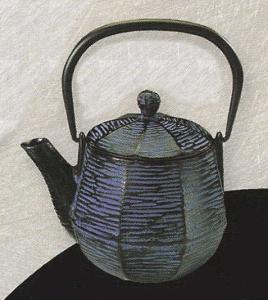Teapots
Yixing Teapots – The Original Teapot
The history of tea is centuries old. Not so of the history of teapots. They’ve only been around for about 500 years.
The first teapots to be introduced to the world of tea around 1500 were the Yixing teapots. These teapots are considered to be the first official teapot. The Yixing teapots are specifically made from purple or red clay called zisha which was unique to the Jiangsu province in China.
A Yixing teapot is made from a single sheet of zisha clay. This clay allowed the aroma and the flavor of the tea to become infused into its surface. Often a teapot would be dedicated to a particular tea so as not to mingle together the delicate flavors of different teas because of this infusion. The early Chinese teapots were rather small and sized for only one or two servings. Therefore, many Chinese would carry their teapots with them when they went out, particularly visiting, and drink their tea directly from their personal teapot.
Though the Yixing teapots are still considered by many today to be the best teapot for preparing tea, the designs began to change from their early simplistic design to be more decorative and ornate. This occurred during the Qing Dynasty (1644-1911). The teapot changed from a simple vessel for drinking tea to a more ornate and decorative piece of art. Talented Chinese artists began to beautifully paint them and they were often inlaid with silver and gold. A variety of shapes for the Yixing teapots were also introduced.
This was the beginning of the teapot’s road to being more than a serviceable pot for brewing tea to becoming a sought after decorative collectible and a status symbol among families. This viewpoint of teapots would grow and therefore they continue to be desirable and highly collectible today.

